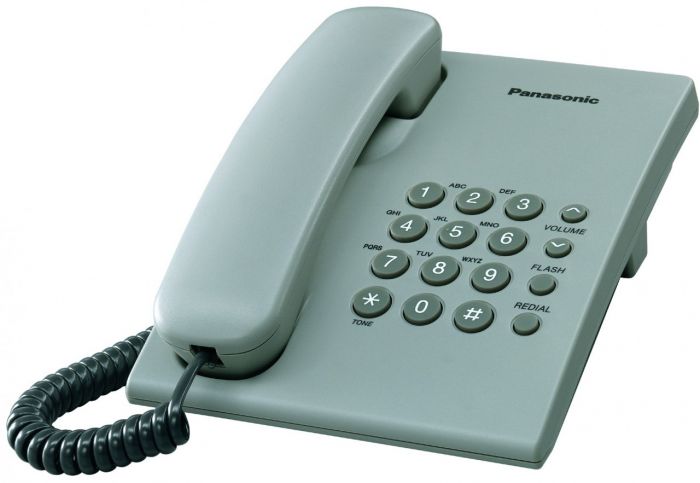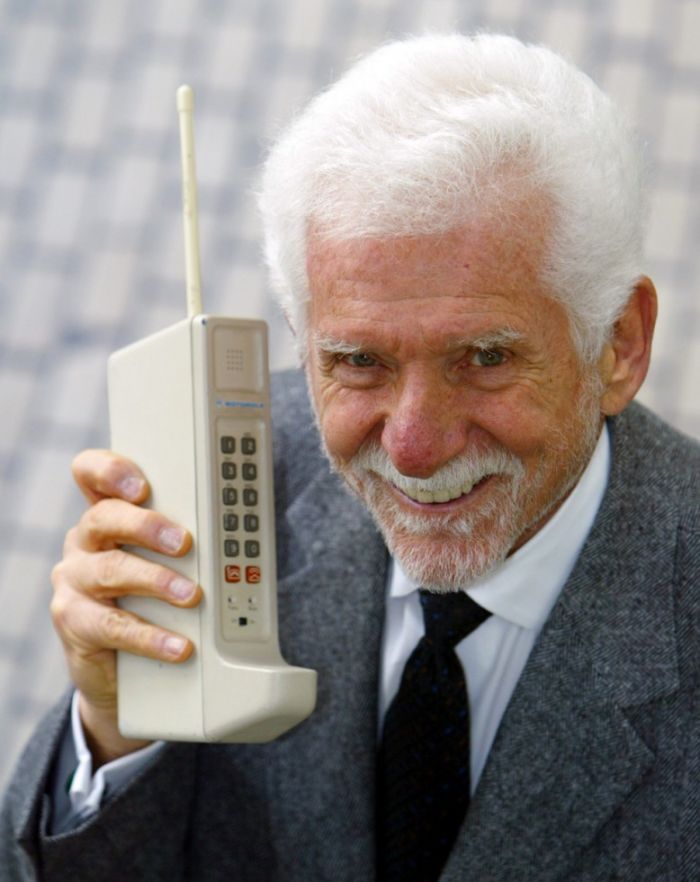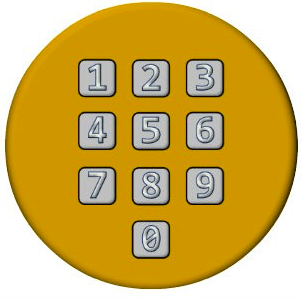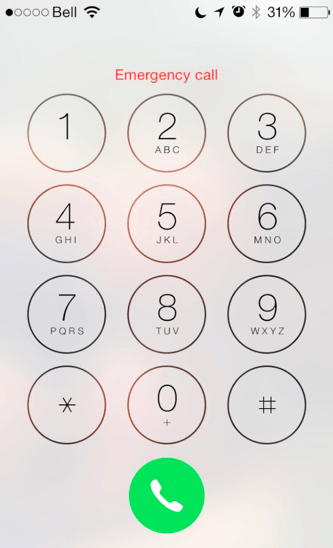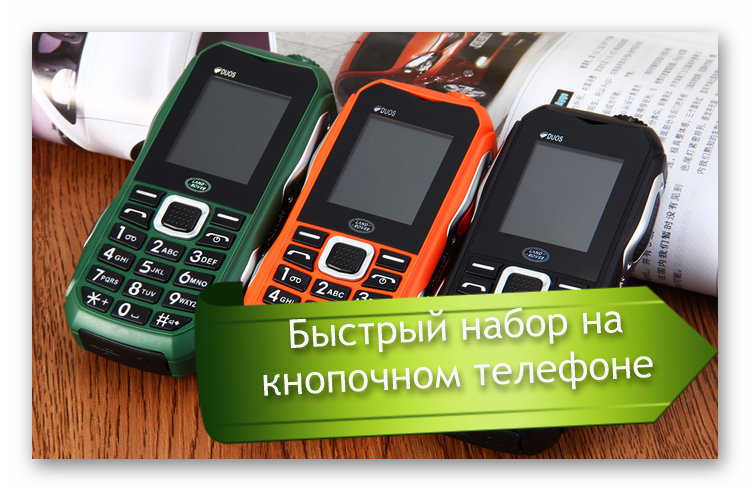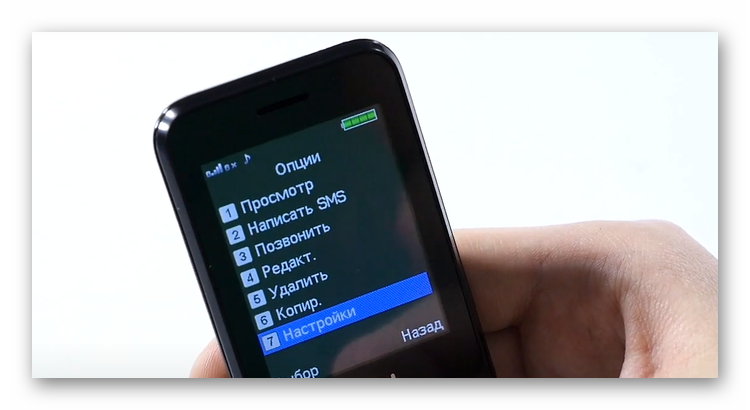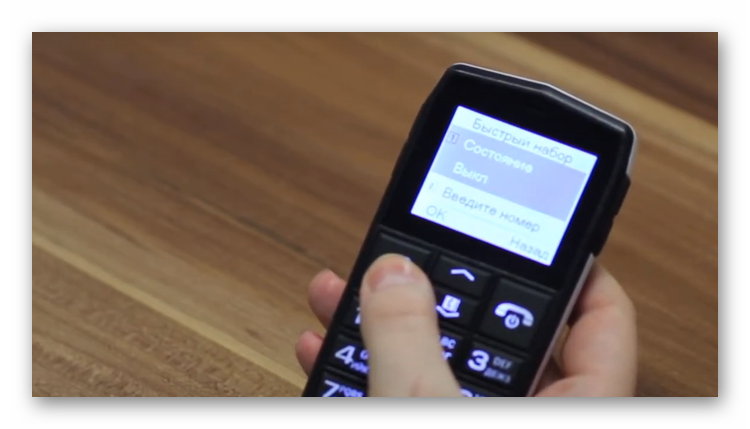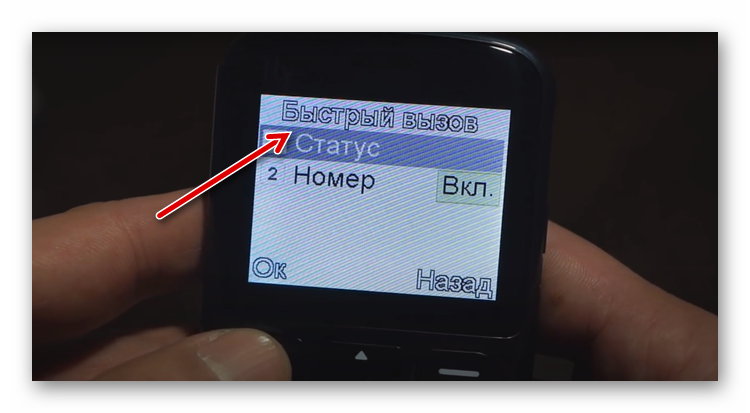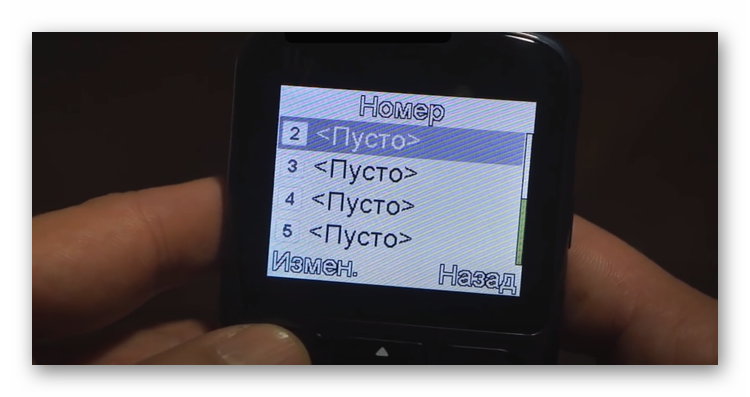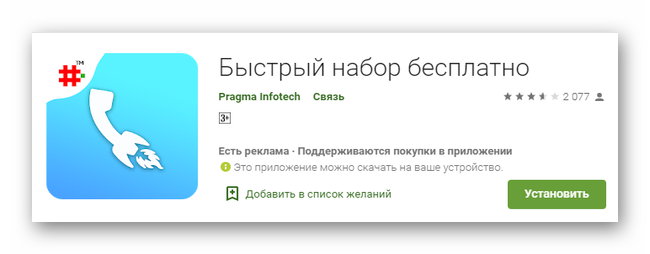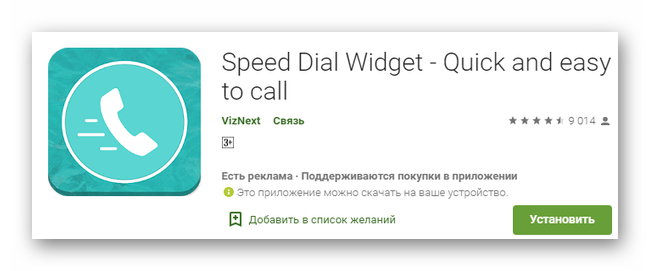При ответе на этот вопрос каждый из вас вспомнит стандартную раскладку. Вроде бы «самособойразумеющийся» вариант, а что разве можно как то по другому ? Но оказывается, было же целое исследование!
29 августа пользователь форума Hacker News обратил внимание на запись в блоге Data Genetics, посвящённую тому, как расположены кнопки с цифрами на телефонах. Автор материала объяснял, как и откуда появился принцип расположения кнопок, использующийся уже больше полувека и сохранившийся даже после перехода со стационарных телефонов на мобильные устройства с сенсорными дисплеями.
О выборе единого стандартного дизайна для расположения кнопок на телефоне производители аппаратов и компании, занимавшиеся обеспечением связи, задумались в конце 50-х годов. Определяющим в этом вопросе стало исследование американской компании AT&T, которое было опубликовано в журнале Bell Systems Technical Journal в 1960 году. Полностью его можно прочитать здесь.
В общей сложности для тестов оптимального расположения кнопок в AT&T отобрали 16 вариантов размещения цифр.
Специалисты компании-оператора изучили каждый из дизайнов и протестировали их на предмет скорости набора и количества ошибок в телефонных номерах, совершаемых при использовании конкретной системы.
В итоге удалось выделить группу из пяти вариантов расположения кнопок, обладавших наименьшим процентом «брака» при наборе и позволявших пользователям телефонов быстрее всего набирать номер.
Как выяснилось, оптимальными по этим показателям являются системы с двумя вертикальными или горизонтальными рядами по пять кнопок в каждом, система квадратного размещения кнопок 3×3 плюс одна кнопка снизу, а также два так называемых круговых варианта, которые напоминали расположение цифр на телефонах с дисковым набором.
Затем из «соревнования» были исключён дизайн с двумя вертикальными рядами кнопок. Несмотря на его формальное удобство для пользователей, участники эксперимента отмечали, что им не нравится, как этот вариант выглядит внешне.
В свою очередь, инженеры AT&T заявили, что круговые варианты расположения не лучшим образом подходят для использования их на реально существующих моделях телефонов. Специалисты компании высказались в пользу использования квадратных и прямоугольных вариантов размещения, так как они, по их мнению, были лучше с конструкторской точки зрения.
Вот можно вспомнить такое расположение кнопок в первом сотовом телефоне:
Расположение цифр в два вертикальных ряда всё-таки появились в первом мобильном устройстве. * На фото: Мартин Купер, инженер Моторолы, совершившый первый в мире звонок с моб. устройства.
Хотя про первый мобильный телефон говорят что это спорно. Вот тут мы изучали этот вопрос — Кто изобрел сотовый телефон ?
Но вернемся к нашему исследованию. Итоговый выбор состоял из квадратного расположения 3×3 плюс одна кнопка снизу и варианта с двумя горизонтальными полосками цифр.
В ходе опроса с перевесом 12 голосов против 3 победило расположение в две полосы по пять кнопок в каждой. Тем не менее, позже в качестве основного был выбран другой вариант, который и стал окончательным стандартом.
Чем именно руководствовались в AT&T при принятии этого решения, достоверно неизвестно. По некоторым данным, решение принималось конкретным инженером компании, который мог учесть при этом собственные эстетические предпочтения или особенности тех моделей телефонов, на которых ему предстояло внедрять новую систему кнопок.
Как бы то ни было, в итоге расположение по схеме 3×3 плюс одна прижилось и до сих пор, с добавлением слотов для * и # применяется как в стационарных телефонах, так и в мобильных устройствах, где физические кнопки уже заменены сенсорными.
Еще несколько интересных статей по теме «как это происходило»: вот например История типовой канистры, а вот История «джакузи» и узнайте Кто делает более половины всех застежек-молний на планете. Давайте вспомним Кто изобрел шариковую ручку, а так же Историю Красной Звезды
При ответе на этот вопрос каждый из вас вспомнит стандартную раскладку. Вроде бы «самособойразумеющийся» вариант, а что разве можно как то по другому ? Но оказывается, было же целое исследование!
29 августа пользователь форума Hacker News обратил внимание на запись в блоге Data Genetics, посвящённую тому, как расположены кнопки с цифрами на телефонах. Автор материала объяснял, как и откуда появился принцип расположения кнопок, использующийся уже больше полувека и сохранившийся даже после перехода со стационарных телефонов на мобильные устройства с сенсорными дисплеями.
О выборе единого стандартного дизайна для расположения кнопок на телефоне производители аппаратов и компании, занимавшиеся обеспечением связи, задумались в конце 50-х годов. Определяющим в этом вопросе стало исследование американской компании AT&T, которое было опубликовано в журнале Bell Systems Technical Journal в 1960 году. Полностью его можно прочитать здесь.
В общей сложности для тестов оптимального расположения кнопок в AT&T отобрали 16 вариантов размещения цифр.
Специалисты компании-оператора изучили каждый из дизайнов и протестировали их на предмет скорости набора и количества ошибок в телефонных номерах, совершаемых при использовании конкретной системы.
В итоге удалось выделить группу из пяти вариантов расположения кнопок, обладавших наименьшим процентом «брака» при наборе и позволявших пользователям телефонов быстрее всего набирать номер.
Как выяснилось, оптимальными по этим показателям являются системы с двумя вертикальными или горизонтальными рядами по пять кнопок в каждом, система квадратного размещения кнопок 3×3 плюс одна кнопка снизу, а также два так называемых круговых варианта, которые напоминали расположение цифр на телефонах с дисковым набором.
Затем из «соревнования» были исключён дизайн с двумя вертикальными рядами кнопок. Несмотря на его формальное удобство для пользователей, участники эксперимента отмечали, что им не нравится, как этот вариант выглядит внешне.
В свою очередь, инженеры AT&T заявили, что круговые варианты расположения не лучшим образом подходят для использования их на реально существующих моделях телефонов. Специалисты компании высказались в пользу использования квадратных и прямоугольных вариантов размещения, так как они, по их мнению, были лучше с конструкторской точки зрения.
Вот можно вспомнить такое расположение кнопок в первом сотовом телефоне:
Расположение цифр в два вертикальных ряда всё-таки появились в первом мобильном устройстве. * На фото: Мартин Купер, инженер Моторолы, совершившый первый в мире звонок с моб. устройства.
Хотя про первый мобильный телефон говорят что это спорно.
Но вернемся к нашему исследованию. Итоговый выбор состоял из квадратного расположения 3×3 плюс одна кнопка снизу и варианта с двумя горизонтальными полосками цифр.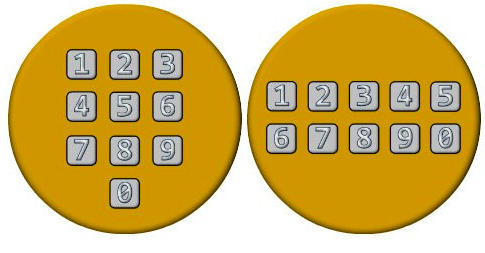
Чем именно руководствовались в AT&T при принятии этого решения, достоверно неизвестно. По некоторым данным, решение принималось конкретным инженером компании, который мог учесть при этом собственные эстетические предпочтения или особенности тех моделей телефонов, на которых ему предстояло внедрять новую систему кнопок.
Как бы то ни было, в итоге расположение по схеме 3×3 плюс одна прижилось и до сих пор, с добавлением слотов для * и # применяется как в стационарных телефонах, так и в мобильных устройствах, где физические кнопки уже заменены сенсорными.
При ответе на этот вопрос каждый из вас вспомнит стандартную раскладку. Вроде бы «самособойразумеющийся» вариант, а что разве можно как то по другому ? Но оказывается, было же целое исследование!
29 августа пользователь форума Hacker News обратил внимание на запись в блоге Data Genetics, посвящённую тому, как расположены кнопки с цифрами на телефонах. Автор материала объяснял, как и откуда появился принцип расположения кнопок, использующийся уже больше полувека и сохранившийся даже после перехода со стационарных телефонов на мобильные устройства с сенсорными дисплеями.
О выборе единого стандартного дизайна для расположения кнопок на телефоне производители аппаратов и компании, занимавшиеся обеспечением связи, задумались в конце 50-х годов. Определяющим в этом вопросе стало исследование американской компании AT&T, которое было опубликовано в журнале Bell Systems Technical Journal в 1960 году. Полностью его можно прочитать здесь.
В общей сложности для тестов оптимального расположения кнопок в AT&T отобрали 16 вариантов размещения цифр.
Специалисты компании-оператора изучили каждый из дизайнов и протестировали их на предмет скорости набора и количества ошибок в телефонных номерах, совершаемых при использовании конкретной системы.
В итоге удалось выделить группу из пяти вариантов расположения кнопок, обладавших наименьшим процентом «брака» при наборе и позволявших пользователям телефонов быстрее всего набирать номер.
Как выяснилось, оптимальными по этим показателям являются системы с двумя вертикальными или горизонтальными рядами по пять кнопок в каждом, система квадратного размещения кнопок 3×3 плюс одна кнопка снизу, а также два так называемых круговых варианта, которые напоминали расположение цифр на телефонах с дисковым набором.
Затем из «соревнования» были исключён дизайн с двумя вертикальными рядами кнопок. Несмотря на его формальное удобство для пользователей, участники эксперимента отмечали, что им не нравится, как этот вариант выглядит внешне.
В свою очередь, инженеры AT&T заявили, что круговые варианты расположения не лучшим образом подходят для использования их на реально существующих моделях телефонов. Специалисты компании высказались в пользу использования квадратных и прямоугольных вариантов размещения, так как они, по их мнению, были лучше с конструкторской точки зрения.
Вот можно вспомнить такое расположение кнопок в первом сотовом телефоне:
Расположение цифр в два вертикальных ряда всё-таки появились в первом мобильном устройстве. * На фото: Мартин Купер, инженер Моторолы, совершившый первый в мире звонок с моб. устройства.
Хотя про первый мобильный телефон говорят что это спорно.
Но вернемся к нашему исследованию. Итоговый выбор состоял из квадратного расположения 3×3 плюс одна кнопка снизу и варианта с двумя горизонтальными полосками цифр.
В ходе опроса с перевесом 12 голосов против 3 победило расположение в две полосы по пять кнопок в каждой. Тем не менее, позже в качестве основного был выбран другой вариант, который и стал окончательным стандартом.
Чем именно руководствовались в AT&T при принятии этого решения, достоверно неизвестно. По некоторым данным, решение принималось конкретным инженером компании, который мог учесть при этом собственные эстетические предпочтения или особенности тех моделей телефонов, на которых ему предстояло внедрять новую систему кнопок.
Как бы то ни было, в итоге расположение по схеме 3×3 плюс одна прижилось и до сих пор, с добавлением слотов для * и # применяется как в стационарных телефонах, так и в мобильных устройствах, где физические кнопки уже заменены сенсорными.
Еще несколько интересных статей по теме «как это происходило»: вот например История типовой канистры, а вот История «джакузи» и узнайте Кто делает более половины всех застежек-молний на планете. Давайте вспомним Кто изобрел шариковую ручку, а так же Историю Красной Звезды
Источник
Как сделать быстрый набор на кнопочном телефоне
Постоянно набирать один и тот же номер или искать его в записной книжке телефона неудобно, особенно, если часто приходится совершать звонки многим людям. Чтобы упростить себе жизнь, достаточно сделать быстрый набор. На кнопочном телефоне такая функция также доступна. Принцип работы опции в том, что пользователю достаточно нажать всего одну клавишу, чтобы совершить вызов. Это удобно и намного быстрее. Однако подключение функции может отличаться в зависимости от модели мобильного устройства.
Содержание
- Настраиваем быстрый набор на телефонах Xiaomi
- Создаем привязку номера к одной кнопке на Нокиа
- Настройка быстрого набора на телефоне Fly Ezzy
- Быстрый звонок через одну кнопку при помощи сторонних приложений
Настраиваем быстрый набор на телефонах Xiaomi
В популярных телефонах Xiaomi тоже предусмотрена данная опция. Для ее активации и настройки:
- Переходим в «Контакты».
- Выбираем имя абонента и нажимаем кнопку опций.
- Отмечаем «Быстрый набор», выбираем цифру и жмем «OK».
После этого на экране появится сообщение о том, что теперь номер привязан к определенной клавише.
Читайте также: Как заблокировать номер на кнопочном телефоне.
Создаем привязку номера к одной кнопке на Нокиа
Владельцам таких устройств доступно несколько способов настройки быстрого набора номера. Первый метод:
- Перейти в телефонную книгу.
- Нажать на кнопку «Опции».
- Выбрать из списка «Настройка быстрого набора».
- Выбрать цифру, на которую планируется установить «быстрый контакт».
- Когда откроется список номеров телефонной книги, необходимо выбрать требуемый контакт.
Если все сделано правильно, то на экране рядом с цифрой появится номер заданного абонента.
Полезно! Как правило, на большинстве телефонов на цифре «1» уже установлена голосовая почта.
На некоторых моделях процедура немного отличается. Для настройки быстрого набора необходимо:
- Открыть меню набора номера (там, где мы обычно пишем номер перед звонком).
- Выбрать «Меню» (кнопка может быть как на фронтальной панели, так и на боковой).
- Выбрать в списке опций «Быстрый набор».
- Нажать цифру, на которую нужно привязать контакт (обычно от «2» до «9»).
- Выбрать номер абонента в открывшейся записной книге.
- Подтвердить действие.
Дополнительно в меню «Быстрый набор» можно менять заданный телефон или отключать опцию. Также на некоторых моделях Нокиа необходимо перейти в «Настройки» и дальше в «Вызовы».
Там есть опция «Быстрый набор», которую нужно предварительно подключить.
Настройка быстрого набора на телефоне Fly Ezzy
Телефоны Fly отличаются доступной ценой, понятным меню и большими клавишами. Такие модели часто приобретают для пожилых родственников и детей, поэтому опция быстрого набора телефона очень пригодится. Рассмотрим настройку на примере модели Ezzy и встроенной программы телефона:
- Открываем телефонную книгу.
- Выбираем «Опции» и «Настройки быстрого набора».
- Определяем нужную цифру, нажав на соответствующую кнопку.
- Задаем контакт абонента.
Чтобы позвонить на такой номер, достаточно зажать кнопку с цифрой и нажать клавишу «Вызов». На некоторых моделях достаточно продолжительного зажатия клавиши.
Также вам будет интересно: Как снять двухфакторную аутентификацию, если нет доступа к телефону.
Быстрый звонок через одну кнопку при помощи сторонних приложений
Обычно на большинстве мобильных устройств кнопочного типа быстрый набор настраивается примерно одинаково, то есть через приложение «Контакты». Если его нет или выполнить настройку не удается, то можно воспользоваться приложениями. Их можно скачать в Google Play или App Store. Как правило, такие приложения позволяют не только осуществлять быстрый вызов, но также блокируют нежелательные звонки, позволяют объединять дубликаты номеров и многое другое.
Например, можно скачать следующие приложения:
- Быстрый набор бесплатно. Это довольно простая утилита, которая не только обладает опцией «Быстрый набор», но и может использоваться для более удобной отправки сообщений, перехода в мессенджеры и многого другого. Также пользователь сможет отправлять групповые СМС и использовать голосовые команды для вызова. Также можно подключить напоминание о звонке. Полезной опцией является возможность создания резервной копии записной книги.
- Speed Dial Widget. У приложения много хороших отзывов и средняя оценка 4,5. Многие отмечают удобство утилиты для детей и пожилых людей, которые плохо видят. При помощи Speed Dial Widget пользователь может выполнять быстрый набор одним касанием кнопки. Также можно программировать и другие опции для клавиш. Например, вы можете задать открытие сообщение или мессенджера. Также в приложении удобно отображаются контакты из телефонной книги. Программа поддерживает сразу две симки.
В большинстве таких приложений можно настраивать виджеты. Но работать это будет, если на устройстве установлено ПО Android.
Таким образом, настроить быстрый вызов можно на любом телефоне, включая кнопочные модели. Нужно учитывать, на какое количество цифр можно задать номера. На некоторых телефонах есть возможность делать такую привязку не более чем для 9 контактов. Обычно этого вполне достаточно, чтобы задействовать наиболее часто используемые номера.
Опубликовано 09 июня 2022 Обновлено 09 июня 2022
При ответе на этот вопрос каждый из вас вспомнит стандартную раскладку. Вроде бы «самособойразумеющийся» вариант, а что разве можно как то по другому ? Но оказывается, было же целое исследование!
29 августа пользователь форума Hacker News обратил внимание на запись в блоге Data Genetics, посвящённую тому, как расположены кнопки с цифрами на телефонах. Автор материала объяснял, как и откуда появился принцип расположения кнопок, использующийся уже больше полувека и сохранившийся даже после перехода со стационарных телефонов на мобильные устройства с сенсорными дисплеями.
О выборе единого стандартного дизайна для расположения кнопок на телефоне производители аппаратов и компании, занимавшиеся обеспечением связи, задумались в конце 50-х годов. Определяющим в этом вопросе стало исследование американской компании AT&T, которое было опубликовано в журнале Bell Systems Technical Journal в 1960 году. Полностью его можно прочитать здесь.
В общей сложности для тестов оптимального расположения кнопок в AT&T отобрали 16 вариантов размещения цифр.
Специалисты компании-оператора изучили каждый из дизайнов и протестировали их на предмет скорости набора и количества ошибок в телефонных номерах, совершаемых при использовании конкретной системы.
В итоге удалось выделить группу из пяти вариантов расположения кнопок, обладавших наименьшим процентом «брака» при наборе и позволявших пользователям телефонов быстрее всего набирать номер.
Как выяснилось, оптимальными по этим показателям являются системы с двумя вертикальными или горизонтальными рядами по пять кнопок в каждом, система квадратного размещения кнопок 3×3 плюс одна кнопка снизу, а также два так называемых круговых варианта, которые напоминали расположение цифр на телефонах с дисковым набором.
атем из «соревнования» были исключён дизайн с двумя вертикальными рядами кнопок. Несмотря на его формальное удобство для пользователей, участники эксперимента отмечали, что им не нравится, как этот вариант выглядит внешне.
В свою очередь, инженеры AT&T заявили, что круговые варианты расположения не лучшим образом подходят для использования их на реально существующих моделях телефонов. Специалисты компании высказались в пользу использования квадратных и прямоугольных вариантов размещения, так как они, по их мнению, были лучше с конструкторской точки зрения.
Вот можно вспомнить такое расположение кнопок в первом сотовом телефоне:
Расположение цифр в два вертикальных ряда всё-таки появились в первом мобильном устройстве. * На фото: Мартин Купер, инженер Моторолы, совершившый первый в мире звонок с моб. устройства.
Хотя про первый мобильный телефон говорят что это спорно.
Но вернемся к нашему исследованию. Итоговый выбор состоял из квадратного расположения 3×3 плюс одна кнопка снизу и варианта с двумя горизонтальными полосками цифр.
В ходе опроса с перевесом 12 голосов против 3 победило расположение в две полосы по пять кнопок в каждой. Тем не менее, позже в качестве основного был выбран другой вариант, который и стал окончательным стандартом.
Чем именно руководствовались в AT&T при принятии этого решения, достоверно неизвестно. По некоторым данным, решение принималось конкретным инженером компании, который мог учесть при этом собственные эстетические предпочтения или особенности тех моделей телефонов, на которых ему предстояло внедрять новую систему кнопок.
Как бы то ни было, в итоге расположение по схеме 3×3 плюс одна прижилось и до сих пор, с добавлением слотов для * и # применяется как в стационарных телефонах, так и в мобильных устройствах, где физические кнопки уже заменены сенсорными.
From Wikipedia, the free encyclopedia
The Western Electric No. 2500, a typical American 12-button phone of the 1970s and early 80s
The push-button telephone is a telephone that has buttons or keys for dialing a telephone number, in contrast to having a rotary dial as in earlier telephone instruments.
Western Electric experimented as early as 1941 with methods of using mechanically activated reeds to produce two tones for each of the ten digits and by the late 1940s such technology was field-tested in a No. 5 Crossbar switching system in Pennsylvania.[1][2] The technology at that time proved unreliable and it was not until after the invention of the transistor that push-button technology became practical. On 18 November 1963, after approximately three years of customer testing, the Bell System in the United States officially introduced dual-tone multi-frequency (DTMF) technology under its registered trademark Touch-Tone.[citation needed] Over the next few decades touch-tone service replaced traditional pulse dialing technology and it eventually became a world-wide standard for telecommunication signaling.
Although DTMF was the driving technology implemented in push-button telephones, some telephone manufacturers used push-button keypads to generate pulse dial signaling. Before the introduction of touch-tone telephone sets, the Bell System sometimes used the term push-button telephone to refer to key system telephones, which were rotary dial telephones that also had a set of push-buttons to select one of multiple telephone circuits, or to activate other features. Digital push-button telephones were introduced with the adoption of metal–oxide–semiconductor (MOS) integrated circuit (IC) technology in the early 1970s, with features such as the storage of phone numbers (like in a telephone directory) on MOS memory chips for speed dialing.
History[edit]
Analog[edit]
The concept of push buttons in telephony originated around 1887 with a device called the micro-telephone push-button, but it was not an automatic dialing system as understood later. This use even predated the invention of the rotary dial by Almon Brown Strowger in 1891.[3] The Bell System in the United States relied on manual switched service until 1919 when it reversed its decisions and embraced dialed automatic switching. The 1951 introduction of direct distance dialing required automatic transmission of dialed numbers between distant exchanges, leading to the use of inband multi-frequency signaling within the Long Lines network while individual local subscribers continued to dial using standard pulses.[citation needed]
As direct distance dialing expanded to a growing number of communities, local numbers (often four, five, or six digits) were extended to standardized seven-digit named exchanges. A toll call to another area code was eleven digits, including the leading 1. In the 1950s, AT&T conducted extensive studies of product engineering and efficiency and concluded that push-button dialing was preferable to rotary dialing.[4]
After initial customer trials in Connecticut and Illinois, approximately one fourth of the central office in Findlay, Ohio, was equipped in 1960 with touch-tone digit registers for the first commercial deployment of push-button dialing, starting on 1 November 1960.[5][6]
In 1962, Touch-Tone telephones, including other Bell innovations such as portable pagers, were on display for the public to try out at the Bell Systems pavilion at the Seattle World’s Fair.
On 22 April 1963 President John F. Kennedy started the countdown for the opening of the 1964 World’s Fair by keying «1964» on a touch-tone telephone in the Oval Office, starting «a contraption which will count off the seconds until the opening».[7] On November 18, 1963, the first electronic push-button system with touch-tone dialing was commercially offered by Bell Telephone to customers in the Pittsburgh area towns of Carnegie and Greensburg, Pennsylvania,[4][8] after the DTMF system had been tested for several years in multiple locations, including Greensburg. This phone, the Western Electric 1500, had only ten buttons. In 1968 it was replaced by the twelve-button model 2500, adding the asterisk or star (*) and pound or hash (#) keys.[9] The use of tones instead of dial pulses relied heavily on technology already developed for the long line network, although the 1963 touch-tone deployment adopted a different frequency set for its dual-tone multi-frequency signaling.[citation needed]
Although push-button touch-tone telephones made their debut to the general public in 1963, the rotary dial telephone still was common for many years. Sales of touch-tone telephones picked up speed during the 1970s,[10] though the majority of telephone subscribers still had rotary phones, which in the Bell System of that era were leased from telephone companies instead of being owned outright.[11] Adoption of the push-button phone was steady, but it took a long time for them to appear in some areas.[12] At first it was primarily businesses that adopted push-button phones.[13]
Digital[edit]
The touch-tone system required additional equipment at the telephone exchange to decode the tones. However, most telephone exchanges in the early 1970s only supported pulse dialling based on the Strowger switch system, restricting touch-tone telephones to some private branch exchanges (PBX). Tone to pulse converters were later added to linefinder groups in Step by Step offices to allow some subscribers to use DTMF sets. British companies Pye TMC, Marconi-Elliott and GEC developed a new digital push-button telephone technology, based on metal–oxide–semiconductor (MOS) integrated circuit (IC) chip technology. It was variously called the «MOS telephone», the «push-button telephone chip», and the «telephone on a chip». It used MOS integrated circuit (MOS IC) logic, with thousands of MOS transistors on a chip, to convert the keypad input into a pulse signal. This made it possible for push-button telephones to be used with pulse dialling at most telephone exchanges.[14][15]
MOS telephone technology introduced a new feature to push-button telephones: the use of MOS memory chips to store phone numbers, which could then be used for speed dialing at the push of a button.[14][15][16] This was demonstrated in the United Kingdom by Pye TMC, Marconi-Elliot and GEC in 1970.[14][15] Between 1971 and 1973, Bell Laboratories in the United States combined MOS technology with touch-tone technology to develop a push-button MOS touch-tone phone called the «Touch-O-Matic» telephone, which could store up to 32 phone numbers in an electronic telephone directory stored on memory chips. This was made possible by the low cost, low power requirements, small size and high reliability of MOS transistors, over 15,000 of which were contained on ten IC chips, including one chip for logic functions (such as shift registers and counters), one for the keypad dial interface, and eight for memory storage.[17] By 1979, touch-tone phones were gaining popularity,[18] but it was not until the 1980s that the majority of customers owned push-button telephones in their homes; by the 1990s, it was the overwhelming majority.[citation needed]
Some exchanges no longer support pulse-dialing[unreliable source?][12] or charge their few remaining pulse-dial users the higher tone-dial monthly rate[19] as rotary telephones become increasingly rare.[20][21][22] Dial telephones are not compatible with some modern telephone features, including interactive voice response systems, though enthusiasts may adapt pulse-dialing telephones using a pulse-to-tone converter. Most, but not all VoIP analogue Telephone Adapters (ATA) will only support DTMF dialling.[citation needed]
Touch-tone[edit]
The international standard for telephone signaling utilizes dual-tone multi-frequency (DTMF) signaling, more commonly known as touch-tone dialing. It replaced the older and slower pulse dial system.[23][24] The push-button format is also used for all cell phones,[18] but with out-of-band signaling of the dialed number.[citation needed]
The touch-tone system uses audible tones for each of the digits zero through nine. Later this was expanded by two keys labeled with an asterisk (*) and the pound or hash sign (#) to represent the 11th and 12th DTMF signals. These signals accommodate various additional services and customer-controlled calling features.[4][25]
The DTMF standard assigns specific frequencies to each column and row of push-buttons in the telephone keypad; the columns in the push-button pad have higher-frequency tones, and rows have lower-frequency tones in the audible range. When a button is pressed the dial generates a combination signal of the two frequencies for the selected row and column, a dual-tone signal, which is transmitted over the phone line to the telephone exchange.[4]
When announced, the DTMF technology was not immediately available on all switching systems. The circuits of subscribers requesting the feature often had to be moved from older switches that supported only pulse dialing to a newer crossbar, or later an electronic switching system, requiring the assignment of a new telephone number which was billed at a higher monthly rate. Community dial office subscribers would often find the service initially unavailable as these villages were served by a single unattended exchange, often step by step, with service from a foreign exchange impractically expensive. Rural party line service was typically based on mechanical switching equipment which could not be upgraded.[citation needed]
While a tone-to-pulse converter could be deployed to any existing mechanical office line using 1970s technology, its speed would be limited to pulse dialing rates.[26][27]
The new central office switches were backward-compatible with rotary dialing.[citation needed]
DTMF keypad layout[edit]
The standard layout of the keys on the touch-tone telephone was the result of research of the human-engineering department at Bell Laboratories in the 1950s under the leadership of South African-born psychologist John Elias Karlin (1918–2013), who was previously a leading proponent in the introduction of all-number-dialing in the Bell System. This research resulted in the design of the DTMF keypad that arranged the push-buttons into 12 positions in a 3-by-4 position rectangular array, and placed the 1, 2, and 3 keys in the top row for most accurate dialing.[28] The remaining digits occupied the lower rows in sequence from left to right; the 0, however, was placed into the center of the fourth row, while omitting the lower left and lower right positions.[citation needed]
The DTMF keyboard layout broke with the tradition established in cash registers (and later adopted in calculators and computers) of having the lower numbers at the bottom.[29] This was due to research conducted by Bell Labs using test subjects unfamiliar with keypads. Comparing various layouts including two-row, two-column, and circular configurations, the study concluded that while there was little difference in speed or accuracy between any of the layouts, the now familiar arrangement with 1 at the top was the most favourably rated.[30]
The engineers had envisioned telephones being used to access computers, and surveyed business customers for possible uses. This led to the addition of the number sign (#, pound or diamond in this context, hash, square or gate in the UK, and octothorpe by the original engineers) and asterisk or star (*) keys in 1969.[citation needed] Later, the hash and asterisk keys were used in vertical service codes, such as *67 to suppress caller ID in the Bell System.[citation needed]
In military telephone systems four additional signals (A, B, C, D) were defined for signaling call priority.[citation needed]
Pulse dialing[edit]
Iskra ETA85 pushbutton telephone with pulse-dialing keypad (Yugoslavia, 1988).
Historically, not all push-button telephones used DTMF dialing technology. Some manufacturers implemented pulse dialing with push-button keypads and even Western Electric produced several telephone models with a push-button keypad that could also emit traditional dial pulses. Sometimes the mode was user-selectable with a switch on the telephone. Pulse-mode push-button keypads typically stored the dialed number sequence in a digit collector register to permit rapid dialing for the user. Some push button pulse dial phones allow for double-speed pulse dialing. These allow even faster pulse dialing in exchanges that recognize double-speed pulse dialing.[citation needed]
As telephone companies continued to levy surcharges for touch-tone service long after any technical justification ceased to exist,[31] a push-button telephone with pulse dialing capability represented a means for a user to obtain the convenience of push-button dialing without incurring the touch-tone surcharge.[citation needed]
DC signaling[edit]
Heemaf 1955 type wall telephone by Philips with DC signaling pushbutton dial (Netherlands, Dec.1962).
In the 1950s, the Dutch electronics concern Philips developed a direct current (DC) signaling method for dialing telephone numbers, for use in the UB-49 private branch exchange (PBX) system. The push-button dial pad used an arrangement of semiconductor diodes to produce a distinct sequence of polarity states for each dialed digit between the two line conductors and ground return, which were analyzed in the exchange by relay logic.[32]
In 1968, the system was used in the UK, in a brief excursion from standards, when the General Post Office (GPO) introduced the first UK-made push-button telephone, the GPO 726 (Ericsson N2000 series).[33][34]
British GPO 726 telephone with DC signaling dial pad (1968).
Features[edit]
Modern push-button telephone
Electronics within push-button telephones may provide several usability features, such as last number redial and storage of commonly called numbers. Some telephone models support additional features, such as retrieval of information and data or code and PIN entry.[35]
Most analog telephone adapters for Internet-based telecommunications (VoIP) recognize and translate DTMF tones but ignore dial pulses, an issue which also exists for some PBX systems. Like cellular handsets, telephones designed for voice-over-IP use out-of-band signaling to send the dialed number.[citation needed]
See also[edit]
- History of the telephone
- Mobile phone
- Timeline of the telephone
Telephones portal
References[edit]
- ^ Bell Telephone Laboratories, A History of Engineering and Science in the Bell System – Switching Technologies (1975, AT&T)
- ^ Push. Click. Touch. – History of the Button – 1963: Pushbutton Telephone – December 11, 2006
- ^ The New York Times – «When Dials Were Round and Clicks Were Plentiful» Archived 2011-07-07 at the Wayback Machine- by Catherine Greenman, October 1999
- ^ a b c d «telephone | History, Definition, & Uses». Encyclopedia Britannica.
- ^ AT&T, J.G. Lindsay (ed.), December 1960, Touch-Tone Phones Offered, Long Lines, Vol. 40 (5), 25.
- ^ «Findlay’s Bicentennial — Visit Findlay». Archived from the original on 2014-12-10. Retrieved 2014-12-04.
- ^ «President Starts Countdown for Fair», Associated Press report in The Gettysburg Times, April 23, 1963, p11
- ^ Engineering Pathway – Bell Telephone introduces push button telephone Archived 2011-07-13 at the Wayback Machine – by Alice Agogino – November 18, 2009
- ^ «Milestones in AT&T History – 1963». corp.att.com. Archived from the original on December 28, 2006. Retrieved May 6, 2017.
- ^ «/ccpa/». TribLIVE.com.
- ^ «When We Dialed Telephone Numbers». Archived from the original on 2013-06-24. Retrieved 2013-06-20.
- ^ a b «I Remember JFK – Push-Button Telephones».
- ^ «What is a Touch-Tone Telephone? (with pictures)». wiseGEEK.
- ^ a b c «Push-button telephone chips» (PDF). Wireless World: 383. August 1970.
- ^ a b c Valéry, Nicholas (11 April 1974). «Debut for the telephone on a chip». New Scientist. Reed Business Information. 62 (893): 65–7. ISSN 0262-4079.
- ^ Electronic Components. U.S. Government Printing Office. 1974. p. 23.
- ^ Gust, Victor; Huizinga, Donald; Paas, Terrance (January 1976). «Call anywhere at the touch of a button» (PDF). Bell Laboratories Record. 54: 3–8.[permanent dead link]
- ^ a b «What is a Touch Tone Telephone? (with pictures)». wiseGEEK.
- ^ «SaskTel ending rotary dial service». CBC News – Saskatchewan. 2012-04-02. Retrieved 2013-05-23.
- ^ TimesDaily.com – Advances make many items close to obsolete[permanent dead link] – by Tom Smith & Bernie Delinski – October 14, 2009 – Retrieved February 10, 2010
- ^ The Free Lance-Star – Aug 12, 1994, by Michael Zitz, page 1 – Rotary phone users in info highway’s slow lane
- ^ Sacramento Business Journal – Rotary phones ring true for few – all but gone from workplace – March 9, 2001
- ^ «General Telephones — History». www.cntr.salford.ac.uk.
- ^ «What is a Rotary Phone? (with pictures)». wiseGEEK.
- ^ «Telephone Timeline – Greatest Engineering Achievements of the Twentieth Century». www.greatachievements.org.
- ^ Mitel Application note MSAN-108: Applications of the MT8870 integrated DTMF receiver, Page A50, Figure 2 (MT8870 DTMF receiver, MT4325 Pulse dialer), June 1983. A tone-to-pulse converter was one of Mitel’s first products in 1973.
- ^ United States Patent 3959598: Identification forwarding circuit for use with tone-to-pulse converters, filed April 15, 1974.
- ^ Fox, Margalit (February 8, 2013). «John E. Karlin, Who Led the Way to All-Digit Dialing, Dies at 94». The New York Times.
- ^ Staff, Straight Dope (July 16, 2002). «Why do telephone keypads count from the top down, while calculators count from the bottom up?». The Straight Dope.
- ^ R. L. Deninger, Human Factors Engineering Studies of the Design and Use of Pushbutton Telephone Sets, The Bell System Technical Journal, vol. 39, no. 4, July 1960
- ^ The ‘Busted’ Edition, CBC Marketplace, Canadian Broadcasting Corporation, 2012
- ^ B.H. Geels, N. Scheffer, Keyset Selection of Telephone Numbers, Philips Telecommunication Review, Volume 17(1), August 1956, p.30–37
- ^ «TELE No. 726». www.britishtelephones.com.
- ^ http://www.samhallas.co.uk/repository/n_diagrams/0000/N826.pdf[bare URL PDF]
- ^ «Mobile Phone As Home Computer». philip.greenspun.com.
From Wikipedia, the free encyclopedia
The Western Electric No. 2500, a typical American 12-button phone of the 1970s and early 80s
The push-button telephone is a telephone that has buttons or keys for dialing a telephone number, in contrast to having a rotary dial as in earlier telephone instruments.
Western Electric experimented as early as 1941 with methods of using mechanically activated reeds to produce two tones for each of the ten digits and by the late 1940s such technology was field-tested in a No. 5 Crossbar switching system in Pennsylvania.[1][2] The technology at that time proved unreliable and it was not until after the invention of the transistor that push-button technology became practical. On 18 November 1963, after approximately three years of customer testing, the Bell System in the United States officially introduced dual-tone multi-frequency (DTMF) technology under its registered trademark Touch-Tone.[citation needed] Over the next few decades touch-tone service replaced traditional pulse dialing technology and it eventually became a world-wide standard for telecommunication signaling.
Although DTMF was the driving technology implemented in push-button telephones, some telephone manufacturers used push-button keypads to generate pulse dial signaling. Before the introduction of touch-tone telephone sets, the Bell System sometimes used the term push-button telephone to refer to key system telephones, which were rotary dial telephones that also had a set of push-buttons to select one of multiple telephone circuits, or to activate other features. Digital push-button telephones were introduced with the adoption of metal–oxide–semiconductor (MOS) integrated circuit (IC) technology in the early 1970s, with features such as the storage of phone numbers (like in a telephone directory) on MOS memory chips for speed dialing.
History[edit]
Analog[edit]
The concept of push buttons in telephony originated around 1887 with a device called the micro-telephone push-button, but it was not an automatic dialing system as understood later. This use even predated the invention of the rotary dial by Almon Brown Strowger in 1891.[3] The Bell System in the United States relied on manual switched service until 1919 when it reversed its decisions and embraced dialed automatic switching. The 1951 introduction of direct distance dialing required automatic transmission of dialed numbers between distant exchanges, leading to the use of inband multi-frequency signaling within the Long Lines network while individual local subscribers continued to dial using standard pulses.[citation needed]
As direct distance dialing expanded to a growing number of communities, local numbers (often four, five, or six digits) were extended to standardized seven-digit named exchanges. A toll call to another area code was eleven digits, including the leading 1. In the 1950s, AT&T conducted extensive studies of product engineering and efficiency and concluded that push-button dialing was preferable to rotary dialing.[4]
After initial customer trials in Connecticut and Illinois, approximately one fourth of the central office in Findlay, Ohio, was equipped in 1960 with touch-tone digit registers for the first commercial deployment of push-button dialing, starting on 1 November 1960.[5][6]
In 1962, Touch-Tone telephones, including other Bell innovations such as portable pagers, were on display for the public to try out at the Bell Systems pavilion at the Seattle World’s Fair.
On 22 April 1963 President John F. Kennedy started the countdown for the opening of the 1964 World’s Fair by keying «1964» on a touch-tone telephone in the Oval Office, starting «a contraption which will count off the seconds until the opening».[7] On November 18, 1963, the first electronic push-button system with touch-tone dialing was commercially offered by Bell Telephone to customers in the Pittsburgh area towns of Carnegie and Greensburg, Pennsylvania,[4][8] after the DTMF system had been tested for several years in multiple locations, including Greensburg. This phone, the Western Electric 1500, had only ten buttons. In 1968 it was replaced by the twelve-button model 2500, adding the asterisk or star (*) and pound or hash (#) keys.[9] The use of tones instead of dial pulses relied heavily on technology already developed for the long line network, although the 1963 touch-tone deployment adopted a different frequency set for its dual-tone multi-frequency signaling.[citation needed]
Although push-button touch-tone telephones made their debut to the general public in 1963, the rotary dial telephone still was common for many years. Sales of touch-tone telephones picked up speed during the 1970s,[10] though the majority of telephone subscribers still had rotary phones, which in the Bell System of that era were leased from telephone companies instead of being owned outright.[11] Adoption of the push-button phone was steady, but it took a long time for them to appear in some areas.[12] At first it was primarily businesses that adopted push-button phones.[13]
Digital[edit]
The touch-tone system required additional equipment at the telephone exchange to decode the tones. However, most telephone exchanges in the early 1970s only supported pulse dialling based on the Strowger switch system, restricting touch-tone telephones to some private branch exchanges (PBX). Tone to pulse converters were later added to linefinder groups in Step by Step offices to allow some subscribers to use DTMF sets. British companies Pye TMC, Marconi-Elliott and GEC developed a new digital push-button telephone technology, based on metal–oxide–semiconductor (MOS) integrated circuit (IC) chip technology. It was variously called the «MOS telephone», the «push-button telephone chip», and the «telephone on a chip». It used MOS integrated circuit (MOS IC) logic, with thousands of MOS transistors on a chip, to convert the keypad input into a pulse signal. This made it possible for push-button telephones to be used with pulse dialling at most telephone exchanges.[14][15]
MOS telephone technology introduced a new feature to push-button telephones: the use of MOS memory chips to store phone numbers, which could then be used for speed dialing at the push of a button.[14][15][16] This was demonstrated in the United Kingdom by Pye TMC, Marconi-Elliot and GEC in 1970.[14][15] Between 1971 and 1973, Bell Laboratories in the United States combined MOS technology with touch-tone technology to develop a push-button MOS touch-tone phone called the «Touch-O-Matic» telephone, which could store up to 32 phone numbers in an electronic telephone directory stored on memory chips. This was made possible by the low cost, low power requirements, small size and high reliability of MOS transistors, over 15,000 of which were contained on ten IC chips, including one chip for logic functions (such as shift registers and counters), one for the keypad dial interface, and eight for memory storage.[17] By 1979, touch-tone phones were gaining popularity,[18] but it was not until the 1980s that the majority of customers owned push-button telephones in their homes; by the 1990s, it was the overwhelming majority.[citation needed]
Some exchanges no longer support pulse-dialing[unreliable source?][12] or charge their few remaining pulse-dial users the higher tone-dial monthly rate[19] as rotary telephones become increasingly rare.[20][21][22] Dial telephones are not compatible with some modern telephone features, including interactive voice response systems, though enthusiasts may adapt pulse-dialing telephones using a pulse-to-tone converter. Most, but not all VoIP analogue Telephone Adapters (ATA) will only support DTMF dialling.[citation needed]
Touch-tone[edit]
The international standard for telephone signaling utilizes dual-tone multi-frequency (DTMF) signaling, more commonly known as touch-tone dialing. It replaced the older and slower pulse dial system.[23][24] The push-button format is also used for all cell phones,[18] but with out-of-band signaling of the dialed number.[citation needed]
The touch-tone system uses audible tones for each of the digits zero through nine. Later this was expanded by two keys labeled with an asterisk (*) and the pound or hash sign (#) to represent the 11th and 12th DTMF signals. These signals accommodate various additional services and customer-controlled calling features.[4][25]
The DTMF standard assigns specific frequencies to each column and row of push-buttons in the telephone keypad; the columns in the push-button pad have higher-frequency tones, and rows have lower-frequency tones in the audible range. When a button is pressed the dial generates a combination signal of the two frequencies for the selected row and column, a dual-tone signal, which is transmitted over the phone line to the telephone exchange.[4]
When announced, the DTMF technology was not immediately available on all switching systems. The circuits of subscribers requesting the feature often had to be moved from older switches that supported only pulse dialing to a newer crossbar, or later an electronic switching system, requiring the assignment of a new telephone number which was billed at a higher monthly rate. Community dial office subscribers would often find the service initially unavailable as these villages were served by a single unattended exchange, often step by step, with service from a foreign exchange impractically expensive. Rural party line service was typically based on mechanical switching equipment which could not be upgraded.[citation needed]
While a tone-to-pulse converter could be deployed to any existing mechanical office line using 1970s technology, its speed would be limited to pulse dialing rates.[26][27]
The new central office switches were backward-compatible with rotary dialing.[citation needed]
DTMF keypad layout[edit]
The standard layout of the keys on the touch-tone telephone was the result of research of the human-engineering department at Bell Laboratories in the 1950s under the leadership of South African-born psychologist John Elias Karlin (1918–2013), who was previously a leading proponent in the introduction of all-number-dialing in the Bell System. This research resulted in the design of the DTMF keypad that arranged the push-buttons into 12 positions in a 3-by-4 position rectangular array, and placed the 1, 2, and 3 keys in the top row for most accurate dialing.[28] The remaining digits occupied the lower rows in sequence from left to right; the 0, however, was placed into the center of the fourth row, while omitting the lower left and lower right positions.[citation needed]
The DTMF keyboard layout broke with the tradition established in cash registers (and later adopted in calculators and computers) of having the lower numbers at the bottom.[29] This was due to research conducted by Bell Labs using test subjects unfamiliar with keypads. Comparing various layouts including two-row, two-column, and circular configurations, the study concluded that while there was little difference in speed or accuracy between any of the layouts, the now familiar arrangement with 1 at the top was the most favourably rated.[30]
The engineers had envisioned telephones being used to access computers, and surveyed business customers for possible uses. This led to the addition of the number sign (#, pound or diamond in this context, hash, square or gate in the UK, and octothorpe by the original engineers) and asterisk or star (*) keys in 1969.[citation needed] Later, the hash and asterisk keys were used in vertical service codes, such as *67 to suppress caller ID in the Bell System.[citation needed]
In military telephone systems four additional signals (A, B, C, D) were defined for signaling call priority.[citation needed]
Pulse dialing[edit]
Iskra ETA85 pushbutton telephone with pulse-dialing keypad (Yugoslavia, 1988).
Historically, not all push-button telephones used DTMF dialing technology. Some manufacturers implemented pulse dialing with push-button keypads and even Western Electric produced several telephone models with a push-button keypad that could also emit traditional dial pulses. Sometimes the mode was user-selectable with a switch on the telephone. Pulse-mode push-button keypads typically stored the dialed number sequence in a digit collector register to permit rapid dialing for the user. Some push button pulse dial phones allow for double-speed pulse dialing. These allow even faster pulse dialing in exchanges that recognize double-speed pulse dialing.[citation needed]
As telephone companies continued to levy surcharges for touch-tone service long after any technical justification ceased to exist,[31] a push-button telephone with pulse dialing capability represented a means for a user to obtain the convenience of push-button dialing without incurring the touch-tone surcharge.[citation needed]
DC signaling[edit]
Heemaf 1955 type wall telephone by Philips with DC signaling pushbutton dial (Netherlands, Dec.1962).
In the 1950s, the Dutch electronics concern Philips developed a direct current (DC) signaling method for dialing telephone numbers, for use in the UB-49 private branch exchange (PBX) system. The push-button dial pad used an arrangement of semiconductor diodes to produce a distinct sequence of polarity states for each dialed digit between the two line conductors and ground return, which were analyzed in the exchange by relay logic.[32]
In 1968, the system was used in the UK, in a brief excursion from standards, when the General Post Office (GPO) introduced the first UK-made push-button telephone, the GPO 726 (Ericsson N2000 series).[33][34]
British GPO 726 telephone with DC signaling dial pad (1968).
Features[edit]
Modern push-button telephone
Electronics within push-button telephones may provide several usability features, such as last number redial and storage of commonly called numbers. Some telephone models support additional features, such as retrieval of information and data or code and PIN entry.[35]
Most analog telephone adapters for Internet-based telecommunications (VoIP) recognize and translate DTMF tones but ignore dial pulses, an issue which also exists for some PBX systems. Like cellular handsets, telephones designed for voice-over-IP use out-of-band signaling to send the dialed number.[citation needed]
See also[edit]
- History of the telephone
- Mobile phone
- Timeline of the telephone
Telephones portal
References[edit]
- ^ Bell Telephone Laboratories, A History of Engineering and Science in the Bell System – Switching Technologies (1975, AT&T)
- ^ Push. Click. Touch. – History of the Button – 1963: Pushbutton Telephone – December 11, 2006
- ^ The New York Times – «When Dials Were Round and Clicks Were Plentiful» Archived 2011-07-07 at the Wayback Machine- by Catherine Greenman, October 1999
- ^ a b c d «telephone | History, Definition, & Uses». Encyclopedia Britannica.
- ^ AT&T, J.G. Lindsay (ed.), December 1960, Touch-Tone Phones Offered, Long Lines, Vol. 40 (5), 25.
- ^ «Findlay’s Bicentennial — Visit Findlay». Archived from the original on 2014-12-10. Retrieved 2014-12-04.
- ^ «President Starts Countdown for Fair», Associated Press report in The Gettysburg Times, April 23, 1963, p11
- ^ Engineering Pathway – Bell Telephone introduces push button telephone Archived 2011-07-13 at the Wayback Machine – by Alice Agogino – November 18, 2009
- ^ «Milestones in AT&T History – 1963». corp.att.com. Archived from the original on December 28, 2006. Retrieved May 6, 2017.
- ^ «/ccpa/». TribLIVE.com.
- ^ «When We Dialed Telephone Numbers». Archived from the original on 2013-06-24. Retrieved 2013-06-20.
- ^ a b «I Remember JFK – Push-Button Telephones».
- ^ «What is a Touch-Tone Telephone? (with pictures)». wiseGEEK.
- ^ a b c «Push-button telephone chips» (PDF). Wireless World: 383. August 1970.
- ^ a b c Valéry, Nicholas (11 April 1974). «Debut for the telephone on a chip». New Scientist. Reed Business Information. 62 (893): 65–7. ISSN 0262-4079.
- ^ Electronic Components. U.S. Government Printing Office. 1974. p. 23.
- ^ Gust, Victor; Huizinga, Donald; Paas, Terrance (January 1976). «Call anywhere at the touch of a button» (PDF). Bell Laboratories Record. 54: 3–8.[permanent dead link]
- ^ a b «What is a Touch Tone Telephone? (with pictures)». wiseGEEK.
- ^ «SaskTel ending rotary dial service». CBC News – Saskatchewan. 2012-04-02. Retrieved 2013-05-23.
- ^ TimesDaily.com – Advances make many items close to obsolete[permanent dead link] – by Tom Smith & Bernie Delinski – October 14, 2009 – Retrieved February 10, 2010
- ^ The Free Lance-Star – Aug 12, 1994, by Michael Zitz, page 1 – Rotary phone users in info highway’s slow lane
- ^ Sacramento Business Journal – Rotary phones ring true for few – all but gone from workplace – March 9, 2001
- ^ «General Telephones — History». www.cntr.salford.ac.uk.
- ^ «What is a Rotary Phone? (with pictures)». wiseGEEK.
- ^ «Telephone Timeline – Greatest Engineering Achievements of the Twentieth Century». www.greatachievements.org.
- ^ Mitel Application note MSAN-108: Applications of the MT8870 integrated DTMF receiver, Page A50, Figure 2 (MT8870 DTMF receiver, MT4325 Pulse dialer), June 1983. A tone-to-pulse converter was one of Mitel’s first products in 1973.
- ^ United States Patent 3959598: Identification forwarding circuit for use with tone-to-pulse converters, filed April 15, 1974.
- ^ Fox, Margalit (February 8, 2013). «John E. Karlin, Who Led the Way to All-Digit Dialing, Dies at 94». The New York Times.
- ^ Staff, Straight Dope (July 16, 2002). «Why do telephone keypads count from the top down, while calculators count from the bottom up?». The Straight Dope.
- ^ R. L. Deninger, Human Factors Engineering Studies of the Design and Use of Pushbutton Telephone Sets, The Bell System Technical Journal, vol. 39, no. 4, July 1960
- ^ The ‘Busted’ Edition, CBC Marketplace, Canadian Broadcasting Corporation, 2012
- ^ B.H. Geels, N. Scheffer, Keyset Selection of Telephone Numbers, Philips Telecommunication Review, Volume 17(1), August 1956, p.30–37
- ^ «TELE No. 726». www.britishtelephones.com.
- ^ http://www.samhallas.co.uk/repository/n_diagrams/0000/N826.pdf[bare URL PDF]
- ^ «Mobile Phone As Home Computer». philip.greenspun.com.

